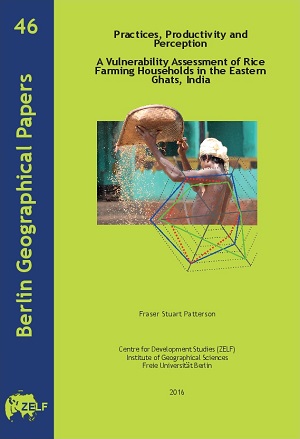
How to Cite
License

This work is licensed under a Creative Commons Attribution-ShareAlike 4.0 International License.
Published
Downloads
Practices, Productivity and Perception
A Vulnerability Assessment of Rice Farming Households in the Eastern Ghats, India
Vulnerability assessments are an increasingly popular tool for evaluating the susceptibility of households, communities, regions and countries to environmental and social change. This study adopts the model of inherent or underlying vulnerability and develops a social -environmental vulnerability index that is applied in a case study of rice farming households in the Eastern Ghats of India. Assessing the vulnerability of farming household sub-groups based on land type and holding size, this study investigates connections between cultivation practices, land size and vulnerability. The study finds that dryland, or rainfed, rice farmers are significantly more vulnerable than farmers cultivating rice on wetland and while small-scale farmers are more productive than large scale farmers, they are also the most vulnerable. The study concludes that while small-scale farmer’s productivity can be related to higher application of fertilisers, greater use of high-yielding varieties and more intense use of labour, this higher productivity can be seen as an adaptation strategy to the higher vulnerability to social and environmental change.







